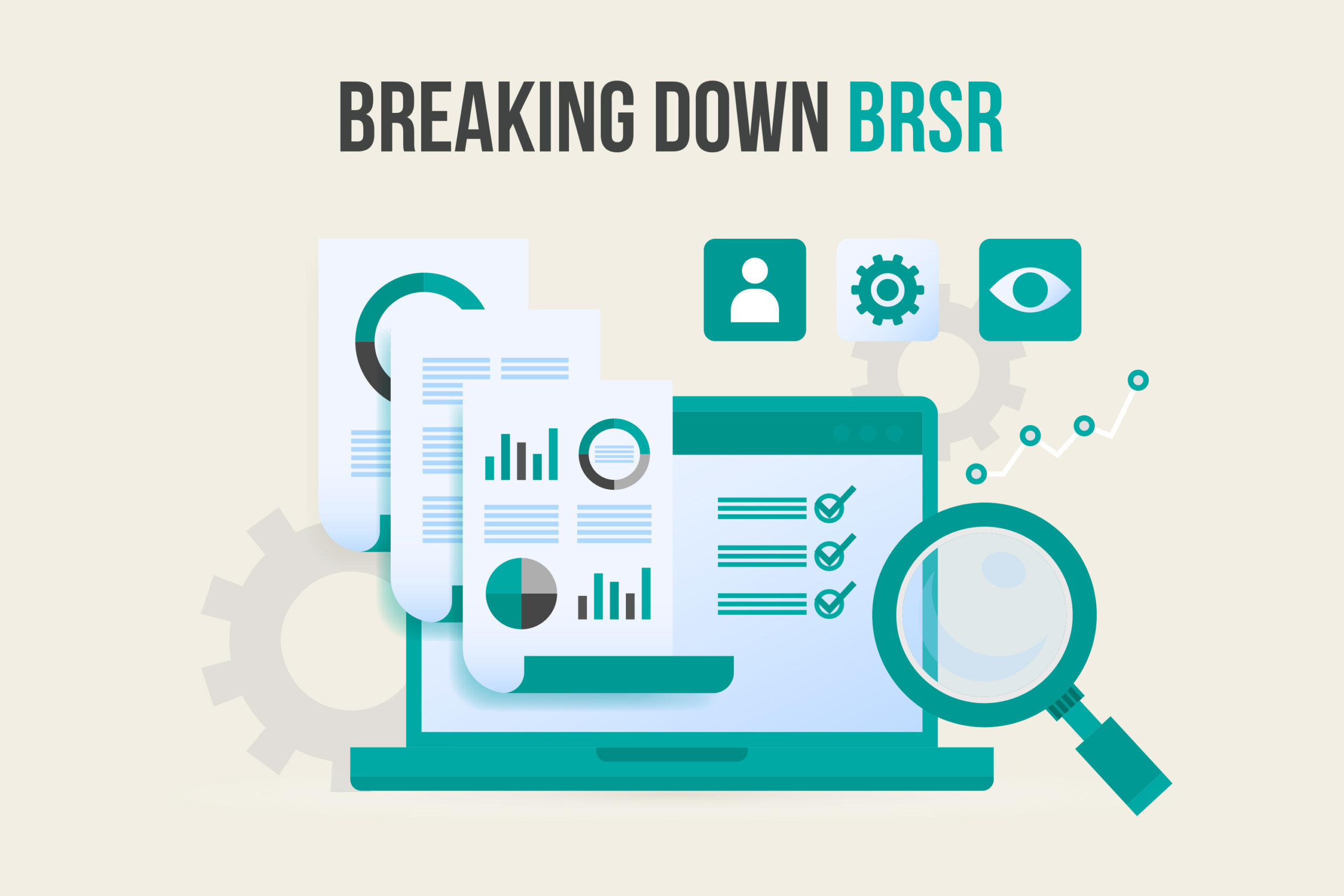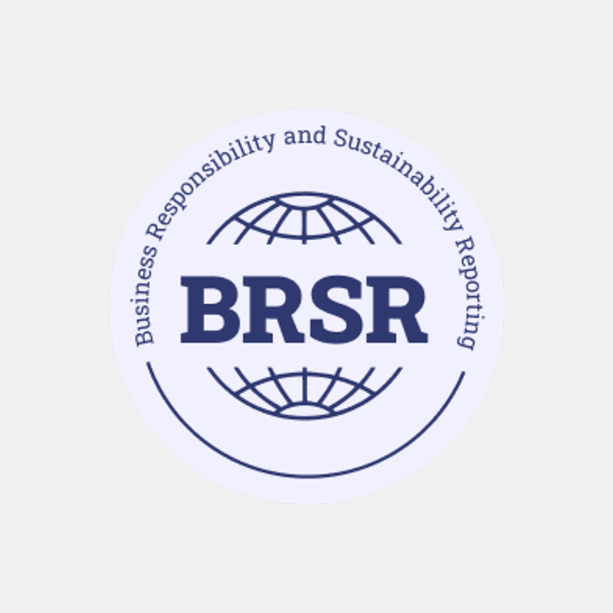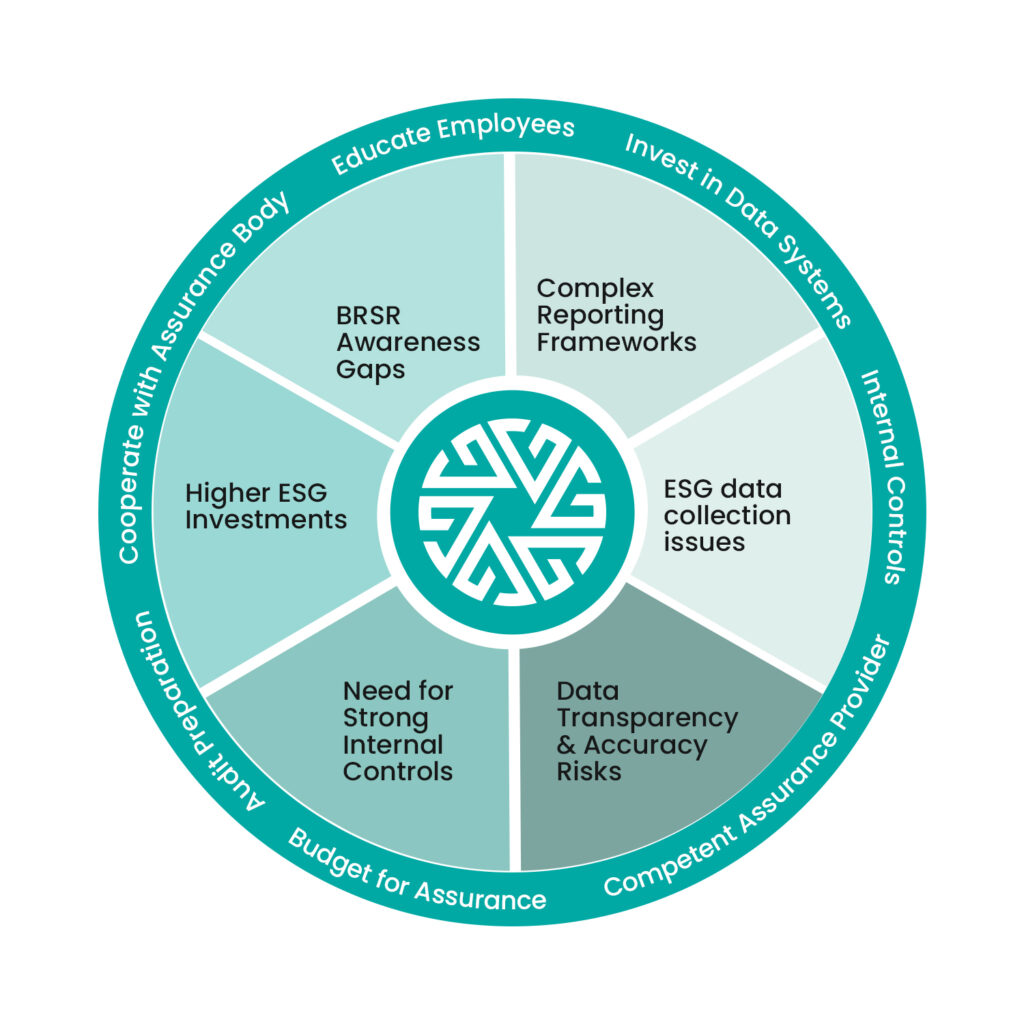
Do you want to build a company that is sustainable and practices responsible methods which would help combat the changing climate? Do you want to cultivate sustainable practices in your firm or company?
Then you have come to the right place. Welcome to the guide to BRSR where we will break down step by step guide that will help you understand how to work what BRSR means and how to make your firm work according to its guidelines.
As a consumer, which company would you invest in? Company A discloses the workings non-financial performance of the organisation, its social responsibility, ethics which it abides by and the initiatives which it takes towards the environment. Company B pollutes the water bodies, workers reported bad work ethics, not being paid minimum wages, and ignoring its responsibilities towards society.
By this guide’s end, you will learn what BRSR means and how you can implement it in your business.
The Business Responsibility and Sustainability Report (BRSR), it is a new corporate reporting format produced by the Securities and Exchange Board of India, traces its origins to the Voluntary Guidelines for Corporate Social Responsibility (CSR) issued by the Ministry of Corporate Affairs (MCA) in 2009. It serves as a disclosure mechanism for businesses to communicate their corporate social responsibility to customers, focusing on non-financial disclosures aligned with the National Guidelines on Responsible Business Conduct.
The top 1000 companies by market capitalization are required by listing regulations to produce this annual report, applicable to both listed and unlisted companies, signaling a new business responsibility. Management and process disclosures showcase adherence to structures, policies, and processes outlined in the National Guidelines on Responsible Business Conduct (NGRBC).

These include essential indicators such as:
Disclosing ESG responsibilities builds stakeholder trust and enables informed decision-making.
It holds companies accountable and aids in risk management, allowing proactive mitigation and ensuring long-term success. ESG reporting are an opportunity to find new business opportunities or to change market positioning.
Annual reports need to be published for BRSR Core compliance.

As we discussed earlier, sustainability is one of the major pillars of an organisation and consumers are more attracted to an organisation that meets the sustainable needs identically to the customer.
But how do we implement it?
There are many different internationally accepted reporting frameworks available to businesses to frame their BRSR reports.
Global Reporting Initiative (GRI): GRI is an international independent standard which helps organisations, governments, and businesses communicate and compile their BRSR reports. It currently has been adopted by multinational organisations, governments, small and medium-sized industries, NGOs, etc. GRI currently provides the most widely used sustainability reporting standards.
Sustainability Accounting Standards Board (SASB): SASB standards focus on industry-specific sustainability issues that are financially material to companies and investors. They provide guidelines for disclosing material environmental, social, and governance (ESG) factors that are relevant to financial performance. SASB standards help companies communicate their ESG risks and opportunities in a manner that is useful for investors and other stakeholders.
Integrated Reporting Framework: Integrated reporting provides the stakeholders a view of the company’s ability to create a sustainable environment and value. The report encourages the companies to give a holistic view of their strategy on governance, performance and prospects.
Task Force on Climate-Related Financial Disclosures (TFCD): The TCFD framework aids companies in disclosing climate-related risks and opportunities in financial reports, including those associated with transitioning to a low-carbon economy and physical impacts of climate change. TCFD disclosures empower stakeholders to understand and address climate-related risks and opportunities.
United Nations Sustainable Development Goals (SDG): Sustainable development goals are a list of 17 goals that need to be adhered to by every country to make our planet sustainable by 2050. Some countries like India have been given a leeway till 2070 as we are still developing. Reporting and sticking to the goals demonstrates their commitment to addressing and contributing to solving global challenges.
These guidelines will assist your company in filing sustainability reports.
When something is implemented, it is common for people to come across challenges. With BRSR implemented, companies face their fair share of challenges so it becomes important for us to understand and address these challenges.
Lack of awareness and understanding: Numerous businesses struggle to grasp the full scope and importance of BRSR. They often overlook essential components when preparing reports and may not fully grasp the principles of responsible business conduct and sustainability reporting. Therefore, it’s essential for organizations to invest in training programs to improve employees’ understanding of BRSR principles.
Integrating Reporting into Existing Processes:Introducing BRSR in established organizations is challenging, necessitating staff training and structural changes. Seamless implementation demands robust communication and collaboration across teams and departments.
Gathering Accurate and Comprehensive Data: Gathering comprehensive data for reporting turns into a mammoth task for the organisation. They are required to collect a wide range of information related to environmental, social and governance. Developing a data collection strategy becomes crucial as without it, it can pose a problem for the company’s operations.
Keeping up with Evolving Reporting Standards: Reporting standards constantly keep on changing and with this constant change companies also have to be up to date with the latest reporting requirements. Adhering to constantly changing requirements and ensuring compliance can be challenging. The already existing business responsibility report also changed to BRSR process disclosure.
Balancing Short-Term Goals with Long-Term Sustainability:Balancing immediate profits with long-term sustainability goals poses a challenge for companies. Implementing BRSR reporting requires operational restructuring, sustainable practices adoption, and priority adjustments. Achieving harmony between financial viability and environmental/social accountability demands strategic planning, leadership indicators and management commitment at all levels.

Additional resources: Joint ventures provide access to partners’ strengths, enhancing capacity for sustainable initiatives. Collaborations offer vital support for comprehensive sustainability reporting by pooling resources and expertise. This enables more effective addressing of sustainability challenges and meaningful progress toward goals.
Shared responsibility: Joint ventures distribute the accountability for sustainability efforts across multiple entities, ensuring that all partners are equally committed to responsible business conduct. This fosters transparency business responsibility reporting and accountability, as each partner is accountable for reporting their contributions to the joint venture’s sustainability objectives.
By sharing the responsibility, companies can more effectively track progress, identify areas for improvement, and demonstrate their collective impact on sustainability outcomes.
Enhanced credibility: Collaborating with established partners enhances a company’s credibility in its BRSR initiatives. When reputable organizations come together to tackle sustainability challenges and report their progress, it strengthens their commitment to sustainability and enhances their reputation within the industry. By leveraging the credibility and reputation of their partners, companies can enhance the trust and confidence of stakeholders, including investors, customers, and regulators, in their sustainability efforts.
Expanding market reach: Joint ventures frequently open up new markets and customer segments for companies to explore. By aligning their sustainability objectives and pooling resources, companies can tap into previously untapped opportunities for growth while advancing sustainable practices. This alignment allows for the exploration of new markets in a manner that promotes both business expansion and environmental and social responsibility.

As compared to joint ventures, collaboration involves various stakeholders, competitors, government entities, non-profit organisations, and consumers.
Collaborations allow each stakeholder an opportunity to learn from other stakeholders and gather extensive knowledge. By being able to learn from each other’s experiences, companies can improve their strategies.
Occasionally, entire industries eligible companies may join forces to establish shared reporting frameworks and standards for BRSR. These collaborative endeavours ensure uniformity and consistency in sustainability reporting across the industry, allowing stakeholders to evaluate and compare the sustainability performance of different companies effectively.
Collaboration enables the exchange of sustainability data among stakeholders, promoting transparency and empowering investors and consumers to make informed decisions. Detailed supply chain and value chains data can also be shared.
Collaborative efforts can stimulate research and development activities focused on addressing sustainability challenges. Through the pooling of resources and expertise, companies can innovate and create sustainable solutions that positively impact society and the environment.

Understanding the key principles of Business Responsibility and Sustainable Reporting is now crucial for any business in today’s day and age. It not only improves the brand’s value and credibility but also enhances its reputation amongst its competitors and customers.
Transparency and accountability should always be the top priority of the organisation. Disclosing information can help the stakeholders to build trust in the organisation and help in better decision-making. Trust can be built by regularly and willingly reporting the successes and challenges faced by the company.

GovEVA is a leading cutting-edge digital ESG SaaS platform. Our vision is to empower large enterprises to digitize and streamline their sustainability journey, ensuring they meet their ESG goals efficiently and effectively.
A1, 8th Floor, Chander Mukhi Building,
Ramnath Goenka Marg, Nariman Point,
Mumbai – 400021, Maharashtra, India.

+91 98202 22089
Info@goveva.com
Copyright @2024 GovEVA. All rights reserved. ![]()
![]()